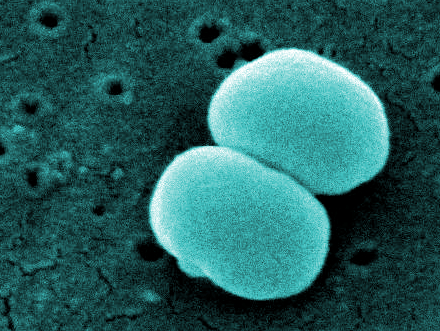Our skin is populated with numerous bacteria. Many of these germs are considered useful or at least harmless. The bacterium Staphylococcus epidermidis (pictured), for example, is found on the skin of most people. It usually causes no symptoms. However, it is a major cause of infection after surgeries, with some strains causing life-threatening infections.
Samuel K. Sheppard, University of Bath and University of Oxford, both UK, and colleagues have collected bacterial samples from healthy individuals and compared them with samples of patients who developed infections after undergoing hip or knee surgery. The team identified 61 genes in the infection-causing bacteria that were not found in most of the “harmless” samples. These genes help the bacterium grow and avoid immune responses, promote the formation of biofilms, and increase antibiotic resistance.
Because the bacteria are so common, they can evolve quickly by exchanging genetic material among themselves. Thus, post-operative infections with resistant skin bacteria could become more frequent in the future. According to the researchers, defining the disease-causing sub-population of Staphylococcus epidermidis as pathogens is the first step towards reducing this type of infection.
- Disease-associated genotypes of the commensal skin bacterium Staphylococcus epidermidis,
Guillaume Méric, Leonardos Mageiros, Johan Pensar, Maisem Laabei, Koji Yahara, Ben Pascoe, Nattinee Kittiwan, Phacharaporn Tadee, Virginia Post, Sarah Lamble, Rory Bowden, James E. Bray, Mario Morgenstern, Keith A. Jolley, Martin C. J. Maiden, Edward J. Feil, Xavier Didelot, Maria Miragaia, Herminia de Lencastre, T. Fintan Moriarty, Holger Rohde, Ruth Massey, Dietrich Mack, Jukka Corander, Samuel K. Sheppard,
Nat. Commun. 2018.
https://doi.org/10.1038/s41467-018-07368-7




